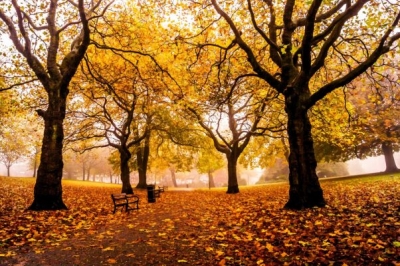
You can divide trees into two main groups by looking at their leaves. Some, like pines, firs and yews, have small leaves that look and feel like needles. Others have broad flat leaves. Trees in this group include oaks, beeches, ashes and maples. These are the trees that lose their leaves in the autumn.
Trees need leaves to help them live and grow. Leaves are part of their circulation system, if you like. During spring and summer large amounts of water are drawn into a tree by its roots. This is distributed all through the tree and eventually passes back into the atmosphere through the leaves. This process is known as ‘transpiration’. A fantastic amount of water can transpire through a tree. It is reckoned that an average sized oak tree can give off as much as 680 litres of water in a day. That is fine in the warm weather of spring and summer. When autumn arrives and the soil temperature drops, it is more difficult for water to move through it. Trees then find it harder to get the water they need. As the weather turns colder with the onset of winter, the circulation of water in a tree becomes impossible. Leaves, like every other part of a tree, need water to survive. So the tree sheds leaves to stop transpiration and conserve its water supplies until the return of spring.
That is why broad-leaved trees are always bare of leaves in winter. Most conifers the trees with needle-like leaves behave differently. Because their leaves are much smaller, far less water transpires through each one. This means they can keep their leaves all year round. Instead of shed ding all their leaves in the autumn and growing them again in the spring, the leaves come and go all year round. So they are known as ‘evergreens’.
Picture Credit : Google




